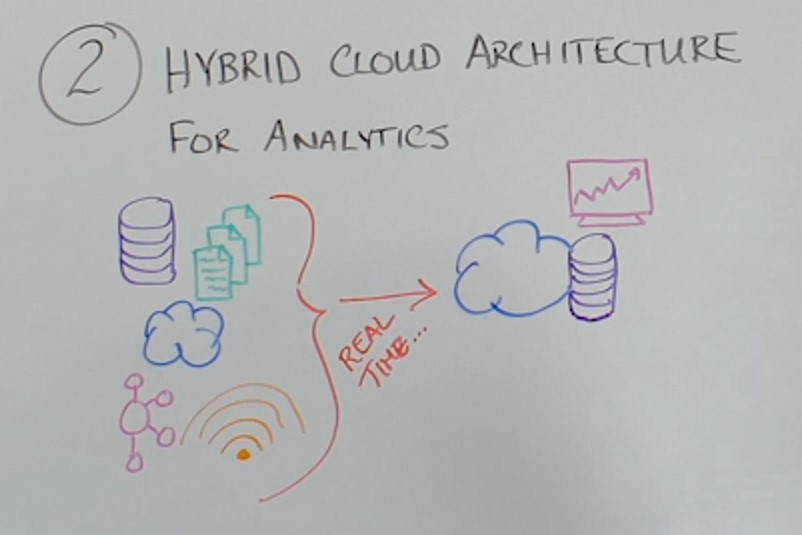Today we’re going to talk about five streaming cloud integration use cases. Streaming cloud integration moves data continuously in real time between heterogeneous databases, with in-flight data processing. Read on, or watch the 9-minute video:
Let’s focus on how to use streaming data integration in cloud initiatives, and the five common scenarios that we see.
Use Case #1 – Online Migration/Cloud Adoption
Let’s start with the first one. It is basically adopting the cloud or getting to the cloud. When you want to move your data to the cloud, streaming cloud integration helps you with online database migration. You have your legacy database and you want to move it to the cloud. If this is a critical database, you do not want to pause it during this migration, you want it to be operational to support your business.
Streaming data integration offers Change Data Capture technology. This captures all new transactions, change transactions, as soon as they happen and delivers them to the target. While you’re doing the initial load to the cloud database, you can start Change Data Capture, keep the system open to transactions, and capture all the new transactions happening with the CDC feature.
Once the initial load is done here, you can apply the change data to the system so that these two are in-sync. Because the system, this database, is open to transactions you basically have no database downtime. This is available for users and once the data is applied here you also have the ability to validate that these two databases are in-sync, and there is no data loss during this migration process. There are tools that provide this validation, to give you no data loss during the migration.
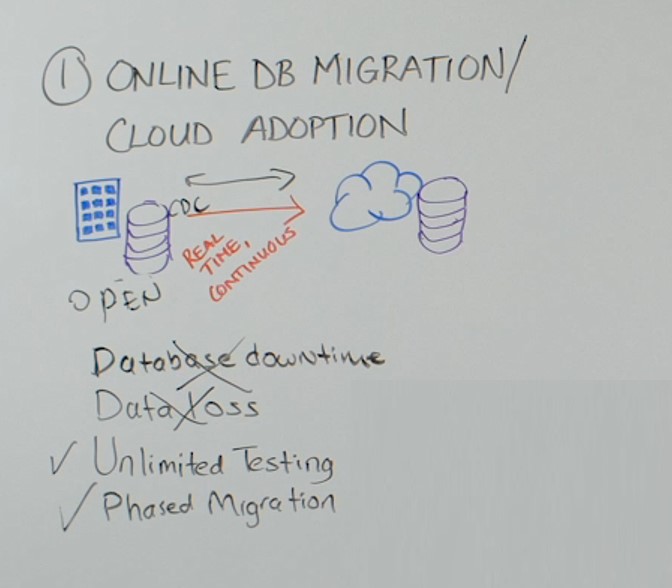
You also have the ability to perform phased migration. Bi-directional data flow between the legacy system and the cloud system allows you to have users on both sides. You can move some of your users to the cloud database and some of them are still in the legacy.
The streaming cloud integration solution can apply the changes happening in the cloud to the legacy and the changes happening in the legacy back to the cloud, so they stay in-sync. You can gradually move your users to the cloud database when you feel comfortable. Phased migration is another way to minimize your risk of moving your mission-critical systems to the cloud.
Use Case #2 – Hybrid Cloud Architecture for Analytics
We have discussed how to ease your cloud adoption, but once you’re in the cloud and you have adopted a cloud solution, you also need to treat it as part of your data center and build continuous data movement between your existing data sources and the new cloud solution.
We see quite a bit of cloud analytics solutions and that’s our second use case. Many organizations these days offload their analytics to cloud solutions. Modern cloud solutions give them tons of new features to modernize their analytics environment and transform their business.
We help with moving all kinds of enterprise data. This can be your databases, your machine data, all kinds of log files (security files and system log files), your existing cloud sources, your messaging systems, and your sensor data. All of them can be moved in real time continuously to your cloud analytics solution.
I would like to add that some streaming cloud integration solutions give you the ability to do in-flight data processing. Transformations happen in-flight so that you deliver the data, without adding latency, to the target system in a consumable format that it needs. You end up having data flowing in the right format for your cloud analytics solution.
The main value from this is that you can now run operational workloads, high value or high operational value producing analytics applications in your analytics solution. You can influence the decisions, operational decisions, happening in your business. That will help you gain faster business transformation throughout your enterprise.
Use Case #3 – Building New Applications in the Cloud
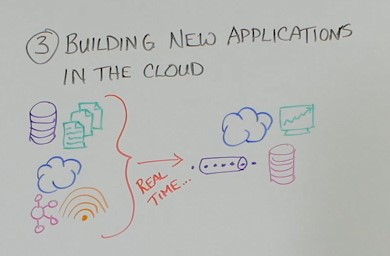
These modern applications move your business forward because the data is available. You can make better use of these cloud applications if you have this real-time bridge between your existing data center and your new cloud environment. Streaming Integration helps you to move your data so you can quickly build new applications for your business, to help it move forward with more modern solutions.
Use Case #4 – Multi-Cloud Integration
We also see multi-cloud use cases. A lot of companies now have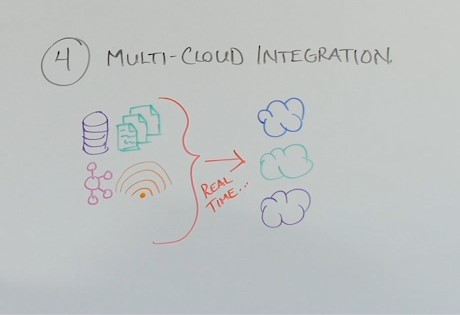
Use Case #5 – Inter-Cloud Integration
Similarly, if you’re working with multiple cloud vendors, you will need to connect these solutions with each other. If you have an operational database in one cloud and you have an analytics solution in 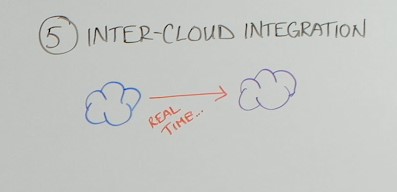
Streaming cloud integration gives you the agility and the ability to move your data wherever you want. Cloud can be easily a part of your data center, seamlessly part of your data infrastructure, by moving your data to that environment.
You can use streaming cloud integration to ease your migration to the cloud and adoption of cloud solutions by minimizing your risk and business disruption. You can also maintain your hybrid cloud architecture and multi-cloud architecture with a continuous data flow from your existing data sources.
To learn more about streaming data integration for your cloud solutions, please visit our Hybrid Cloud Integration solution page, schedule a demo with a Striim expert, or download the Striim platform to get started.


















